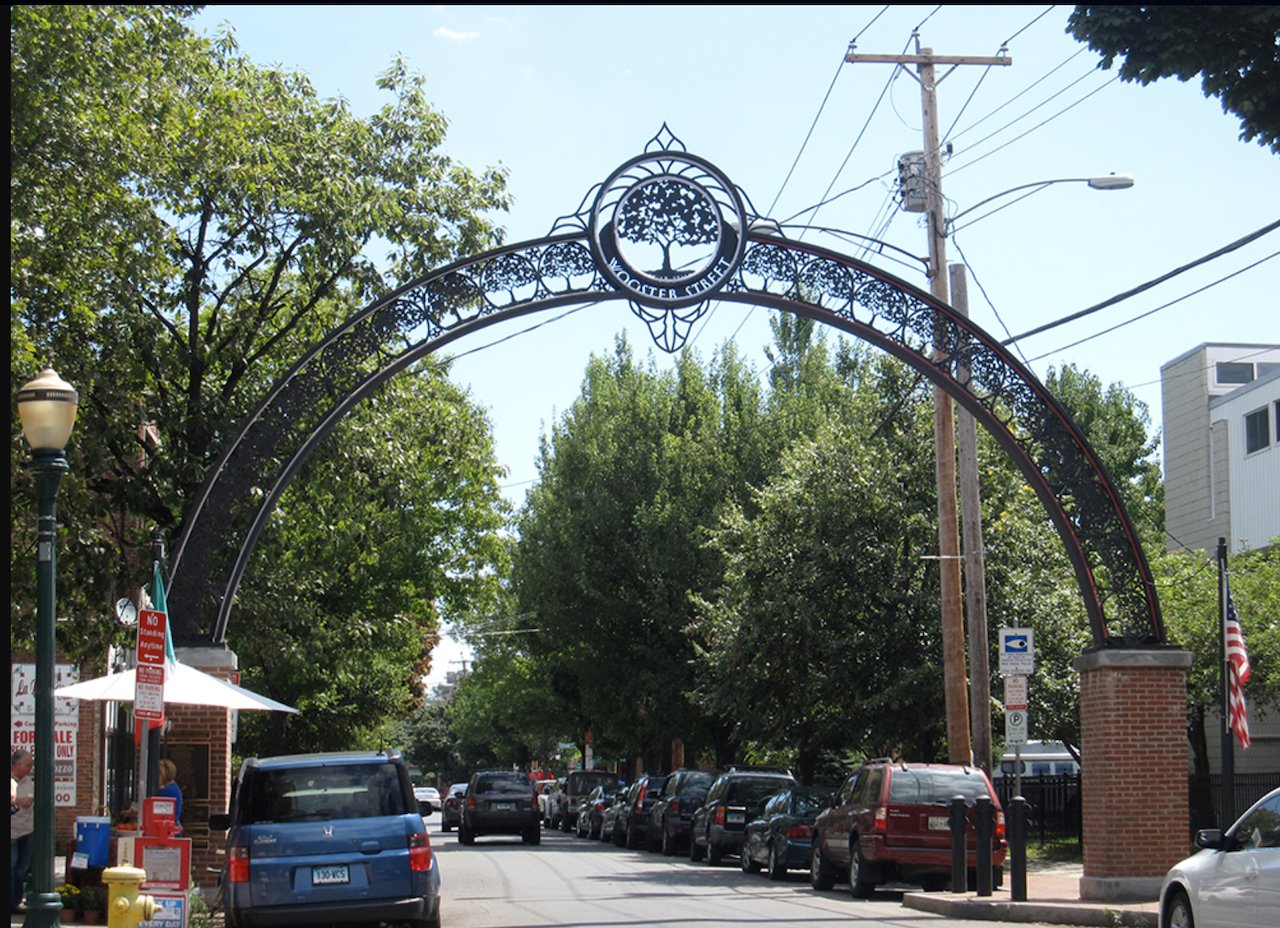
Our History.
We love Wooster square, and we believe you will too.
A brief history of Historic Wooster Square.
In the 1820s, the City of New Haven purchased a six-acre pasture and converted it into a public square named after David Wooster, a Revolutionary War general. The city spread east during the early 19th century, and the area around Wooster Square became a fashionable neighborhood. In 1860, an iron fence was built around the square to replace the original wooden fence.
The square’s development occurred primarily between 1830 and 1870, and some of the most notable buildings in the area are the work of the well-known New Haven architect Henry Austin. The district includes a concentration of distinctive 19th-century residential architecture, with fine examples of the Federal, Greek Revival, Islamic Revival, and Italian Villa styles, as well as Late Victorian Italianate row houses, Second Empire, and Stick and Queen Anne style residences.
According to the New Haven Preservation Trust, by the turn of the 20th century, the growth of industry around the square had made it increasingly less attractive for the socially prominent to live in the neighborhood. Many homes were purchased by Italian-American families, a number of whom were able to make a living by using their homes as stores. This adaptation to commercial use combined with the lower incomes of the new owners downgraded the social prominence of the neighborhood significantly. By the 1930s, urban renewal plans called for total clearance.
A fortunate series of circumstances in the 1950s sparked the beginnings of neighborhood renewal. The Wooster Square Project emerged in 1958-60 as a major focus of the New Haven urban rehabilitation program, at a moment when external events resulted in a community-wide conviction that the neighborhood was worth saving. Before any plans were drawn there were weekly meetings about where to place a major new highway, and it was determined that it should divide the residential district from the industrial district on Hamilton Street. While neighborhood houses and St Patrick's Church were torn down, much of the community was saved. The only disagreement that resulted from these meetings was the community refused to allow a cafe at the Conte Community School because they thought that alcohol and cigars were not a good mix with children. There is a park area within the building which includes a play area and a Bocce Court.
There were several events and trends that contributed to saving the neighborhood. Projects were created by Yale architectural students, who created models for a restored Wooster Square. Relatively high earnings during World War II permitted savings and therefore made possible homeownership by motivated residents. Finally, public endorsement of the architectural potential of the neighborhood was attained by the New Haven Preservation Trust.
These factors were vital at a time when low-interest rehabilitation loans and grants were not available to help the homeowners. Two of the most important early projects were the construction of the Conte Community School – a first of its kind when it was completed in 1965 – and the rehabilitation of the Court Street row houses, which were among the worst housing in the area.
Want to know more?
Read the NY Times Article ⟶


